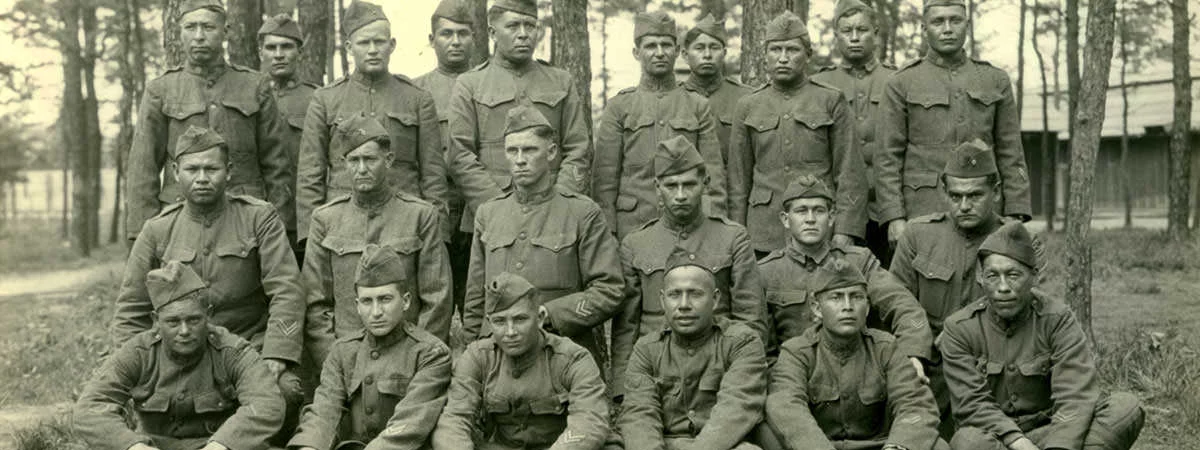While most of the world got involved in World War I in 1914, the United States remained neutral. American President Woodrow Wilson’s decision to keep the nation out of war had the backing of the majority of the public. On May 7, 1915,the British-owned ocean liner Lusitania was sunk by a German submarine killing 1,198 people, including 128 Americans. The public opinion turned against the Germans due to the incident but as Germany pledged to ensure safety of passengers before sinking unarmed vessels, the U.S. stayed neutral. However, the Germans resumed unrestricted submarine warfare in January 1917 in an attempt to win the war. After several American ships were sunk by Germany, the United States declared war on Germany on April 6, 1917. Its involvement in WW1 remained largely limited to the Western Front. The big boost provided by the sheer size and fresh resources of the U.S. army was among the decisive factors in the Allies winning WW1 in November 1918. Here is a detailed analysis of America’s participation in World War I including all the major events in which it was involved.
POSITION OF NEUTRALITY
In 1914, as the world got embroiled in conflict and the First World War broke out in Europe, the United States under the leadership of President Woodrow Wilson declared a policy of neutrality and isolation. A country of immigrants, America had to some extent long followed isolationism in its Foreign Policy. Most American isolationists mooted for a strong economic influence in the world but reluctance to become involved in European alliances and wars. The decision to stay out of WWI had the support of a vast majority of Americans and was among the reasons for Wilson’s re-election in 1916.
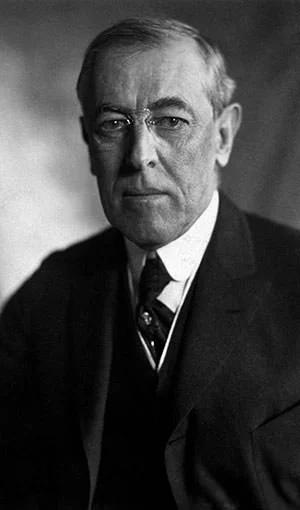
In line with its policy, America was open to trade with all sides and American bankers could lend money to both sides in the war. Taking sides was seen as a threat to America’s own neutral status. However Britain had other ideas; its naval blockade of Germany meant that American trade with the nation was cut by 90 percent from 1914 – 1916. In the same period, trade with France and Britain tripled. Adding to that, America started becoming the leading creditor to Europe, especially the Allied powers; a scenario that played its role when U.S. eventually decided to enter the war.
Sinking of RMS Lusitania
In part due to British policy of blockading Germany, the Germans in February 1915 announced unrestricted warfare against all ships that entered the war zone around Britain. The sinking by German submarines (U Boats) soon began with minor losses to America but a major incident was just round the corner. On May 7, the British-owned ocean liner Lusitania traveling from New York to Britain, was torpedoed near the Irish coast. 1,198 people were killed, including 128 Americans. The Germans justified treating Lusitania as a naval vessel because she was carrying hundreds of tons of war munitions. The incident shocked America, the public opinion turned against the Germans and Wilson threatened war. Stretched on both fronts and unwilling to fight another resourceful enemy, Germany pledged to see to the safety of passengers before sinking unarmed vessels; and also to pay compensation.

House Grey Memorandum
In December 1915, President Wilson tried to brokerage peace between Britain and Germany by sending Colonel House to Europe. On February 22nd, 1916, the House-Grey Memorandum was signed which put on paper Wilson’s plan of mediation. However the British Government, led by Prime Minister H.H. Asquith, vetoed the proposal as neither they, nor their French ally, wanted a return to the status quo and were confident of a victory over the German Empire.
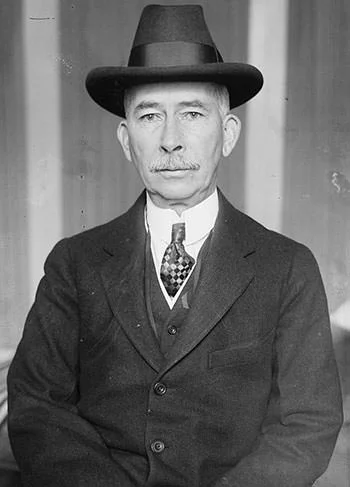
Entry Into WW1
President Wilson was re-elected as the American president in November 1916 and, despite his long resistance, he would soon lead the country into war. Analyzing that an American entry into WWI was becoming inevitable, the Germans resumed unrestricted submarine warfare in January 1917 to win the war of attrition. A few days later American liner Housatonic was sunk by a German U-boat. This worsened diplomatic relations and, in late March, Germany sunk four more American merchant ships.
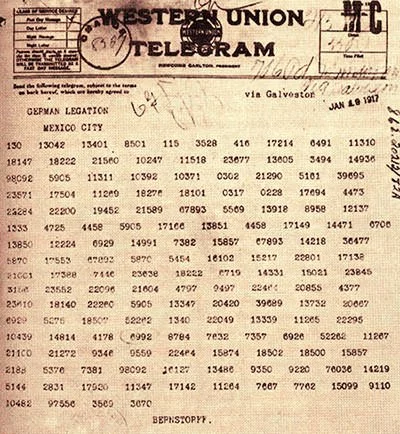
Making matters worse, the Wilson administration was given a copy of the Zimmermann telegram intercepted by the British intelligence. The controversial document urged Mexico to join the war effort on the side of Germany and pledged that, in the event of a German victory, the territories of Arizona, Texas and New Mexico would be stripped from the United States and returned to Mexico.

Citing these reasons, President Woodrow Wilson went before a joint session of Congress to request a declaration of war against Germany on April 2, 1917. Two days later the Senate voted in favor by 82 votes to 6. On the 6th, the House of Representatives delivered their own yes vote by 373 votes to 50, officially entering the United States into the war.
Mobilization and Selective Service Act of 1917
When the United States entered the war, the army stood at 200,000, hardly enough to have a decisive impact in Europe. A systematic mobilization soon started to produce the soldiers, food supplies, munitions and money needed to win the war. The Selective Service Act of 1917 authorized the conscription of military manpower for the war effort so that the United States did not have to rely solely on volunteers. Sweeping domestic propaganda campaigns were started inciting people to join the war effort through appeals to patriotism and civic duty. Over 1 million were expected to enter the Armed Forces but more than 4 million responded. However, civil liberties were sharply curtailed in the period. The Espionage Act of 1917 and the Sedition Act of 1918 criminalized the expression of anti-war sentiment; and criticism of the U.S. government and armed forces.
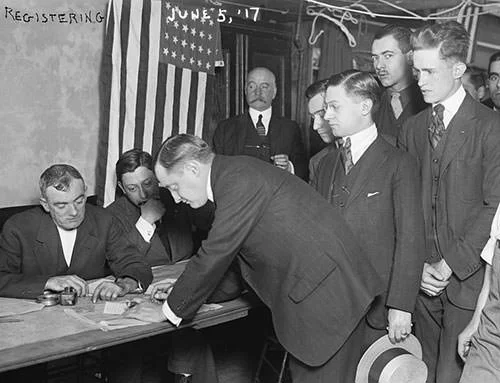
The War
The U.S. war effort remained largely limited to the Western Front. In December 1917, it did declare war on Austria Hungary but America never made declarations of war against the other Central Powers. In spring 1918, the war-weary Allied armies enthusiastically greeted the fresh American troops which soon played a critical role in turning the tide at Chateau-Thierry and Belleau Wood.
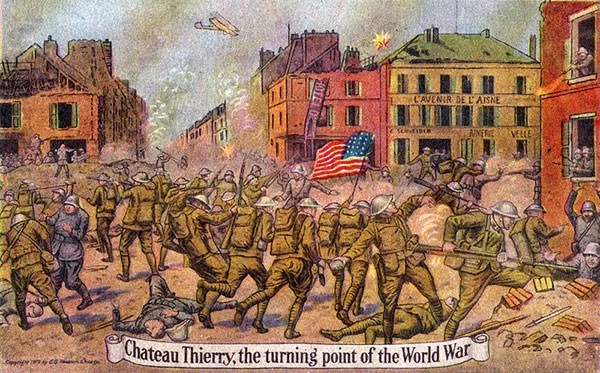
The big boost provided by the sheer size and fresh resources of the American army was indeed among the decisive factors in the result of the war. The American Expeditionary Force began arriving in France in June 1917. However, their numbers were still very small. Bigger forces would only arrive in early 1918. Some 2,084,000 would reach France, and 1,390,000 would see active combat. There were many casualties and 48,909 members of the American armed forces died in battle. Also, another 63,523 died from disease.
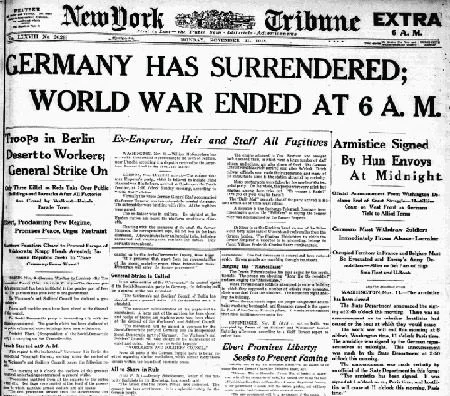
The German forces surrendered on November 11, 1918. Signed on June 28, 1919, the Treaty of Versailles ended the state of war between Germany and the Allied Powers. The position of the United States at the Versailles Peace Conference was in keeping with the fourteen points of the treaty. However, even though America played a key role in the peace negotiations, the United States congress never ratified the Treaty of Versailles, nor did the U.S. join the League of Nations. World War I transformed United States from a country with untapped military potential to a large scale fighting force. Consequently it became one of the major powers in the world.

